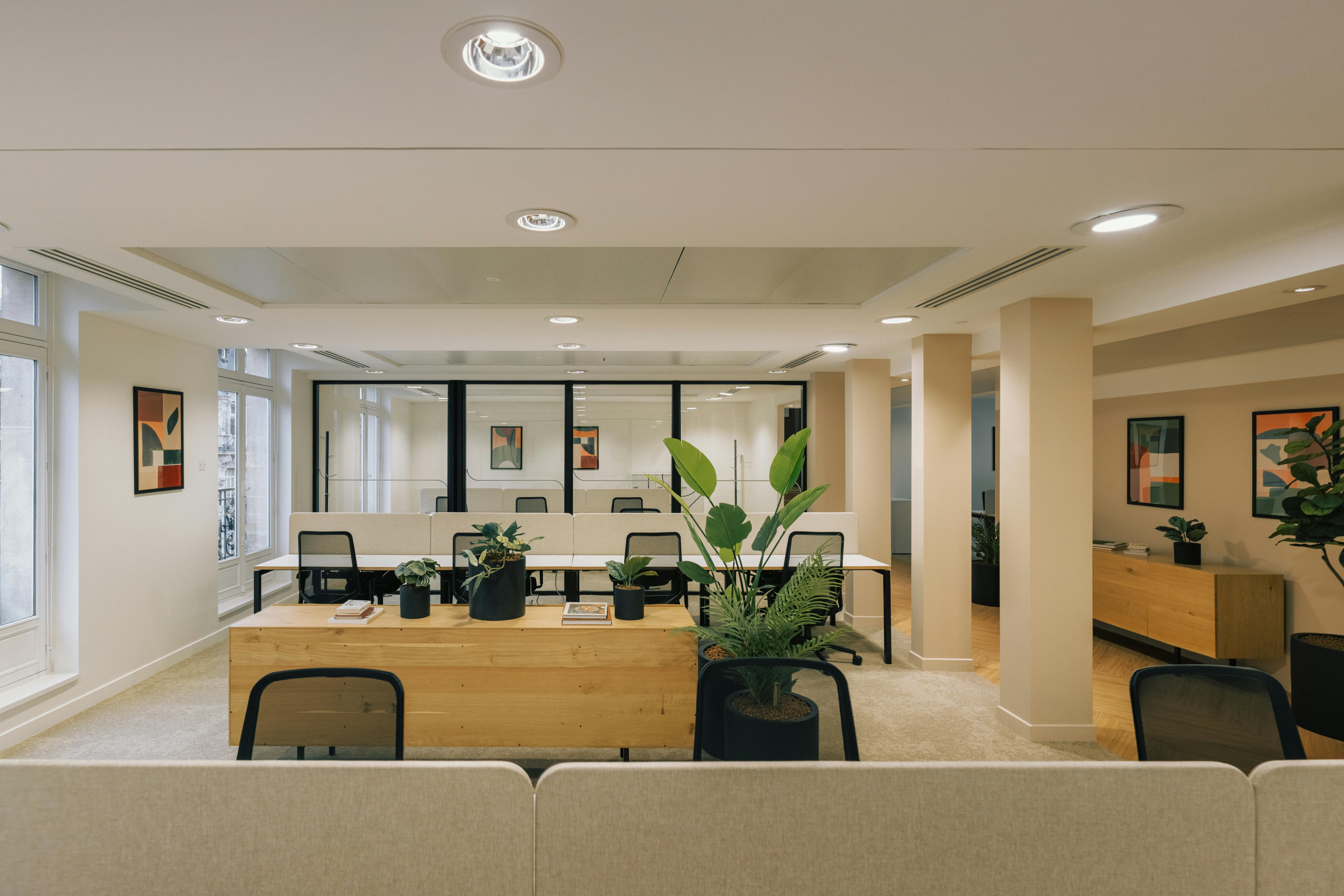

Setting up a nap room at work
Long poorly perceived in the workplace, naps are making a comeback and attracting more and more employers convinced of their benefits on the productivity and well-being of their employees.
Many of them therefore decide to encourage it by setting up nap rooms in their premises.
But be careful, while setting up this type of space is definitely a good idea, you must ensure it is implemented under the best possible conditions to ensure its effectiveness.
Have you decided to install a nap room in your company but don't know how to do it? Deskeo explains everything you need to know to set up the best possible nap room in your premises!
What is a nap room in the workplace?
A nap room in the workplace is a space specifically designed to allow employees to take a short nap during their working day.
This calm and comfortable relaxation space is illuminated with dim light conducive to rest and equipped with suitable furniture such as reclining chairs and cushions.
Far from being a whim, naps in the workplace prove to be particularly effective on productivity and employee well-being:
- A 15 to 20-minute nap reduces stress and fatigue by 30%.
- Naps improve creativity, concentration, and memory.
- Taking a micro-nap at work is beneficial for health as it reduces the risk of workplace accidents and mistakes.
In addition to being beneficial for employees, the nap room helps convey a positive and modern image of the company, which is an asset for attracting and retaining talent.
Why install a nap room at work?
Investing in a rest room offers many advantages for both employees and the company.
Increased productivity
Contrary to popular belief, taking a short nap during the working day is excellent for efficiency because the brain needs to take regular breaks to remain effective.
Companies like Google, NASA and Ben & Jerry's have understood this well and have set up rest areas for their employees.
A NASA study even showed that a 26-minute nap improved pilots' cognitive performance by 34% and their alertness by 54%.
Other research conducted in companies has also shown that employees with access to a nap room were:
- More productive in the afternoon.
- More creative and proactive.
- Less stressed and tired.
Improved well-being at work
Employee well-being now occupies an important place in the business world. They have become aware of the importance of their quality of life at work (QWL) and are primarily looking for companies that can provide them with a pleasant working environment.
Setting up a nap room is therefore a strong gesture towards your employees and future collaborators as it sends a clear message: the company cares about the comfort of its teams.
Employees who have access to a rest room therefore feel more valued, motivated, and engaged. It is a way to improve the quality of life at work (QVT) and reduce psycho-social risks and absenteeism while enhancing the company's attractiveness.
But to fully benefit from the many advantages that this type of space can offer, it is essential to set it up correctly.
How to set up a nap room?
Designing a nap space in a company must be thoughtfully planned to offer the best rest conditions for employees. Here are some criteria and tips for successfully installing it.
Choosing the ideal location
The location of the nap room is crucial. You must choose a quiet place, away from passage areas and noisy zones (open spaces, cafeterias, restrooms...) to allow for restorative sleep.
Ideally, you should opt for a soundproof and easily accessible room for all employees.
5 tips for a soothing setup
Far from being a detail, the environment plays a determining role in the effectiveness of a nap.
It is therefore important to arrange and decorate the room in a way that creates an atmosphere conducive to relaxation and rest.
To achieve this, you can, in particular, ensure to:
- Choose soft and dim lighting, avoid overly aggressive neon lights to promote quick sleep and restorative micro-naps.
- Opt for soothing colours like blue, green or pastel shades.
- Offer comfortable furniture: reclining chairs, sofas, cushions, blankets, pillows...
- Provide well-being accessories: sleep masks, earplugs, essential oils...
- Add some green plants to create a zen and cosy atmosphere.
Comply with legal obligations
Setting up a relaxation room is a good thing, but it is also necessary to ensure that it meets certain conditions:
- The room must be at least 9m2 (or 3m2 per person),
- be heated,
- and soundproofed.
It is also necessary to comply with safety and accessibility standards for people with reduced mobility.
Manage the use of the room
Finally, to avoid abuse, it is recommended to set clear rules to optimise the use of the nap room. For instance, you can:
- Limit the nap duration to 15-20 minutes.
- Set up a reservation schedule.
- Appoint a person responsible for managing the room's occupancy.
- Define specific time slots (after lunch).
- Communicate on the benefits and instructions for use.
In short, sleep is a valuable ally of performance and well-being at work. By setting up a nap room, you are taking a step towards better quality of life in the office. So, ready to take the plunge and offer this restorative rest space to your employees?


Contact Us
We find your Perfect fit!

